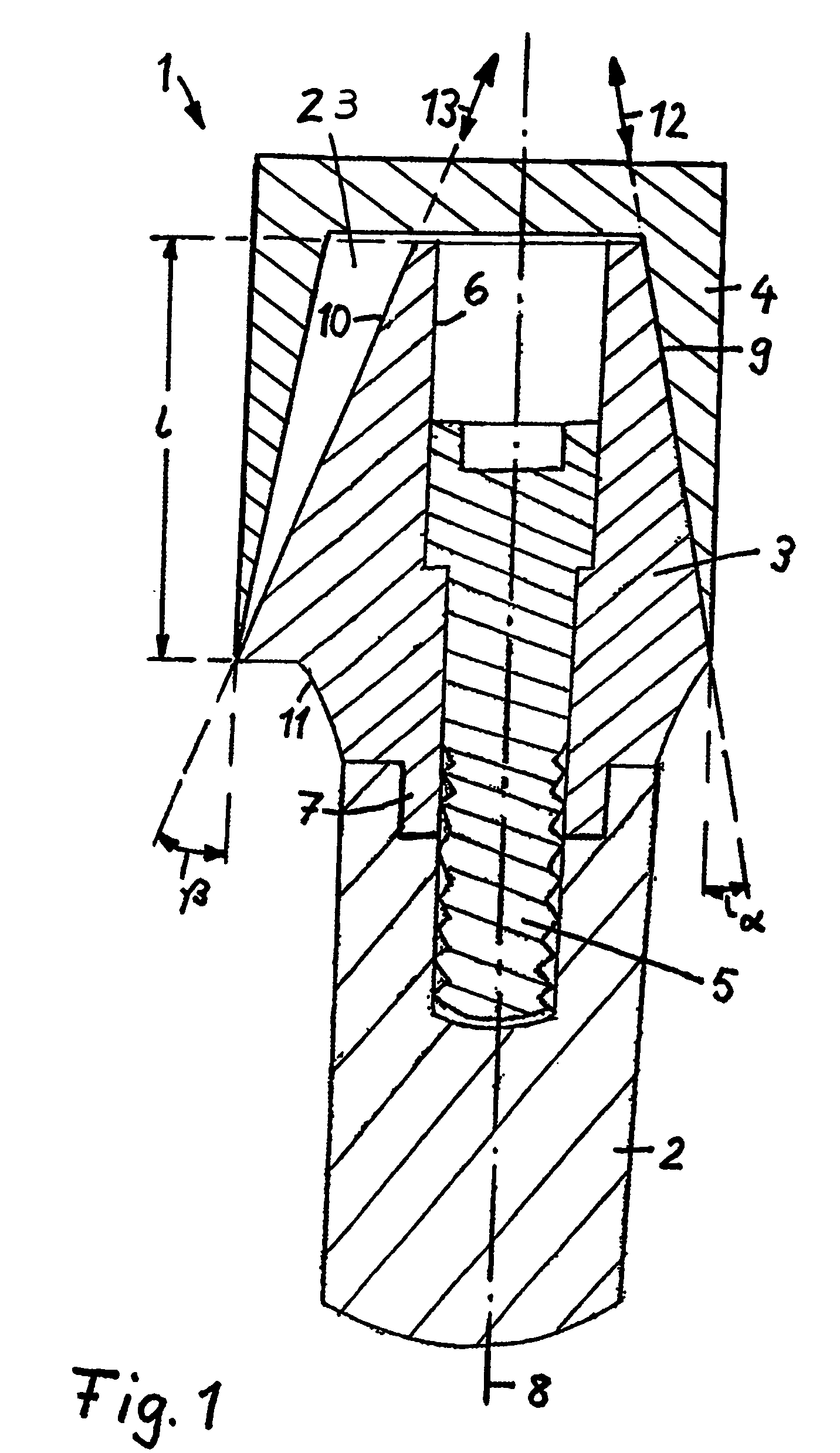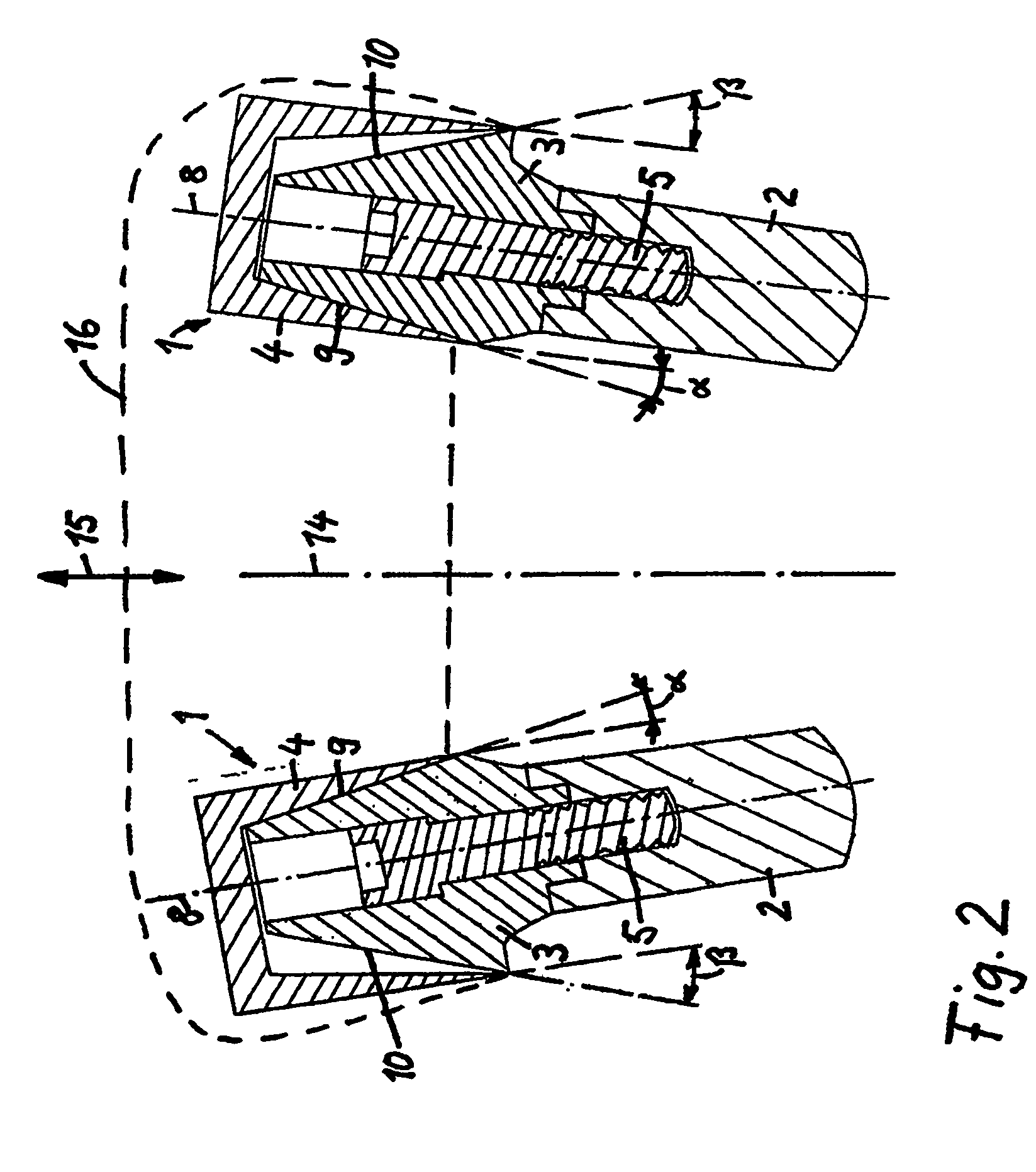Tooth implant
a technology for teeth and support posts, applied in dental surgery, medical science, dentistry, etc., can solve the problems of re-installation and problematic removal of support posts from base carriers, and achieve the effects of large engagement force, easy re-installation, and large frictional area
- Summary
- Abstract
- Description
- Claims
- Application Information
AI Technical Summary
Benefits of technology
Problems solved by technology
Method used
Image
Examples
Embodiment Construction
[0051] Identical components are designated in the various figures by the same reference numerals.
[0052]FIG. 1 shows a tooth implant 1 which comprises a base carrier 2 to be implanted into the jaw of a patient, a support post 3 and a tooth crown 4 disposed on the support post. All components have a common longitudinal axis 9. The support post 3, which is also called the primary crown is disposed on the base carrier 2 and firmly connected thereto by a screw 5. The screw 5 extends into a central bore 6 in the support post 3 and is screwed into a threaded complementary bore formed in the base carrier 2. For better mounting the support post 3 has in the area of its lower front end, a multi-edge connecting section 7, preferably in the form of a hexagonal connecting section, which is received in a complementary cavity formed in the adjacent top end of the base carrier 2. The connecting section 7 may also be in the form of a cone-shaped or cylindrical projection.
[0053] The crown 4 is conn...
PUM
 Login to View More
Login to View More Abstract
Description
Claims
Application Information
 Login to View More
Login to View More - R&D
- Intellectual Property
- Life Sciences
- Materials
- Tech Scout
- Unparalleled Data Quality
- Higher Quality Content
- 60% Fewer Hallucinations
Browse by: Latest US Patents, China's latest patents, Technical Efficacy Thesaurus, Application Domain, Technology Topic, Popular Technical Reports.
© 2025 PatSnap. All rights reserved.Legal|Privacy policy|Modern Slavery Act Transparency Statement|Sitemap|About US| Contact US: help@patsnap.com



